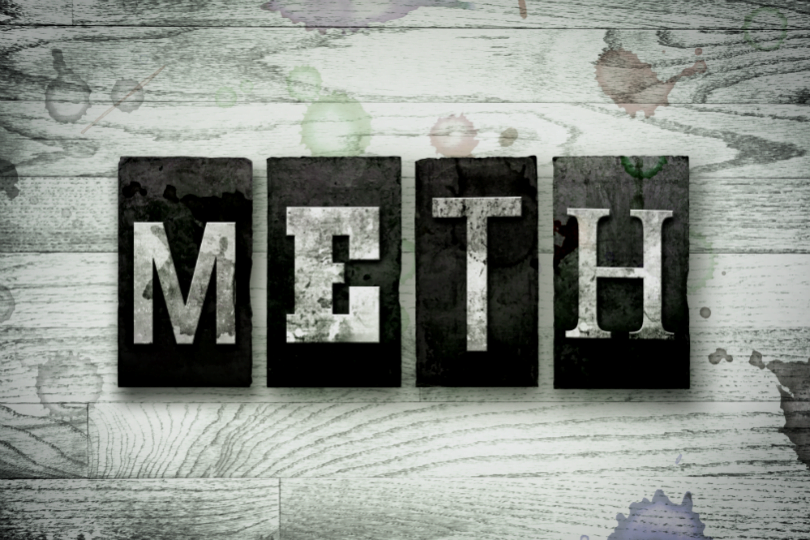Methamphetamines, including crystal meth, are stimulant drugs. Some of these drugs are manufactured legally for medicinal purposes. Crystal meth, however, is always an illegal substance. As is evident from the many images shown on the various media sources, crystal meth also has a significant impact on the user’s physical appearance. Indeed, there are many short and long term effects of crystal meth abuse, affecting the physical, behavioral, and psychological.
“Methamphetamine appears to have neurotoxic (brain-damaging) effects, destroying brain cells that contain dopamine and serotonin. Over time, abuse appears to cause reduced levels of dopamine, which can result in symptoms like those of Parkinson’s disease. Methamphetamine also stimulates locomotor activity (i.e. – reflexes, basic physical movements) and produces “stereotypic behaviors” – random, repetitive, compulsive movements and actions such as twitching or picking at the skin – as a side effect.”
Meth is incredibly addictive and incredibly dangerous and it is vital, therefore, that treatment is offered to those who are using the drug.
What Is Meth Rehab?
Broadly speaking, two types of rehab treatments exist for meth addiction: therapy and pharmacology. With the latter, patients are prescribed medication to help beat their condition. Unfortunately, the FDA (U.S. Food and Drug Administration) has not yet approved any medication for the treatment of meth abuse. This means that those who are addicted must rely on therapy and counseling alone. The National Institute on Drug Abuse (NIDA) supports research in an effort to find pharmacological treatment as well.
“There are currently no medications that counteract the specific effects of methamphetamine or that prolong abstinence from and reduce the abuse of methamphetamine by an individual addicted to the drug. NIDA has made research in the development of medications to treat addiction to stimulants and other drugs a priority, however.”
Some studies are being completed into the possibility of using antibodies, or a vaccine, to neutralize the way methamphetamine affects the body. Significant funding has been made available for this research, which is indicative of the fact that addiction is being taken seriously. It also means that, perhaps in the not too distant future, more help will be available.
When people first attend treatment for meth addiction, they must go through a period of medical detox. This means their body is weaned off the drug gradually. This must be done under full medical supervision so that patients can be as comfortable as possible and are always safe. After detox, treatment begins, which generally involves three key therapies:
- Cognitive Behavioral Therapy, or CBT. This is a type of treatment in which it is assumed that the way people behave is down to responses that they have learned, known as maladaptpive behaviors. CBT is an important form of treatment for virtually all addictive behaviors.
“Individuals in CBT learn to identify and correct problematic behaviors by applying a range of different skills that can be used to stop drug abuse and to address a range of other problems that often co-occur with it.”
CBT helps people to identify their triggers and to develop appropriate behaviors. An example is leaving environments where drugs are being used.
- The Matrix Model. This is a 16-week treatment program during which people take part in behavioral therapy, group, family, and individual counseling, and drug testing; sign up to a 12 step program and motivational therapy and take part in activities that do not relate to drugs.
- Contingency Management Intervention. In this type of treatment, people are motivated to stay off drugs by receiving rewards and incentives. This system does not work with all substances but has proven to be very successful for both cocaine and methamphetamine addictions. Motivational Incentives for Enhancing Drug Abuse Recovery (MIEDAR) is now almost always offered to meth addicts.
“Overall, the main findings demonstrate effectiveness of the particular prize-based intervention. It was notable that this particular intervention was shown to be effective since the efficacy of abstinence incentives is known to depend on magnitude of reinforcement offered.”
All types of drug addiction treatments are offered either on a residential basis or on an outpatient basis. The Substance Abuse and Mental Health Services Administration (SAMHSA) recommends a three month period of intensive outpatient services for meth addiction.
“Anglin and colleagues suggest that the optimum treatment for methamphetamine users is an intensive outpatient setting where the client receives comprehensive counseling three to five times per week for at least the first three months.”
As with all addictions, however, it is vital that treatment is individualized or tailor-fitted to the needs of the patient. Treatment must take various factors into consideration, including the fact that recovering meth users may have developed cognitive impairments. It is vital, therefore, that treatment is offered by a facility that is experienced in handling this. There are significant side effects associated with short- and long-term meth abuse, as well as with meth recovery, and specialized services must be offered to manage them.
One of the biggest problems with meth is that it is incredibly addictive. This is what makes it so difficult for people to seek the help that they need. That said, there are many different paths to recovery open to them. In many cases, meth addicts are court ordered to attend rehab, either in lieu of or after their incarceration. Research has shown that those who enter treatment involuntarily, such as through a drug court, have similar outcomes to those who choose to attend.
This is a positive development since it is very rare that meth users will seek help on their own, as they will simply continue to chase their next high. This is why it is also important that they are properly supported by their families and loved ones. Indeed, it is often the loved ones who encourage people to seek help the first time. Meanwhile, it should be noted that as with all drugs, relapse is unfortunately common. This does not mean that the treatment has failed, but rather that additional treatment is required. As such, loved ones and family members often find themselves having to continue to monitor recovering patients and return them to treatment several times. To get help for yourself or a loved one with crystal meth addiction reach out and contact us at (877) 322-2450.

















